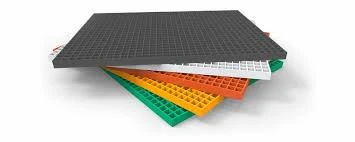
-
 Afrikaans
Afrikaans -
 Albanian
Albanian -
 Amharic
Amharic -
 Arabic
Arabic -
 Armenian
Armenian -
 Azerbaijani
Azerbaijani -
 Basque
Basque -
 Belarusian
Belarusian -
 Bengali
Bengali -
 Bosnian
Bosnian -
 Bulgarian
Bulgarian -
 Catalan
Catalan -
 Cebuano
Cebuano -
 China
China -
 China (Taiwan)
China (Taiwan) -
 Corsican
Corsican -
 Croatian
Croatian -
 Czech
Czech -
 Danish
Danish -
 Dutch
Dutch -
 English
English -
 Esperanto
Esperanto -
 Estonian
Estonian -
 Finnish
Finnish -
 French
French -
 Frisian
Frisian -
 Galician
Galician -
 Georgian
Georgian -
 German
German -
 Greek
Greek -
 Gujarati
Gujarati -
 Haitian Creole
Haitian Creole -
 hausa
hausa -
 hawaiian
hawaiian -
 Hebrew
Hebrew -
 Hindi
Hindi -
 Miao
Miao -
 Hungarian
Hungarian -
 Icelandic
Icelandic -
 igbo
igbo -
 Indonesian
Indonesian -
 irish
irish -
 Italian
Italian -
 Japanese
Japanese -
 Javanese
Javanese -
 Kannada
Kannada -
 kazakh
kazakh -
 Khmer
Khmer -
 Rwandese
Rwandese -
 Korean
Korean -
 Kurdish
Kurdish -
 Kyrgyz
Kyrgyz -
 Lao
Lao -
 Latin
Latin -
 Latvian
Latvian -
 Lithuanian
Lithuanian -
 Luxembourgish
Luxembourgish -
 Macedonian
Macedonian -
 Malgashi
Malgashi -
 Malay
Malay -
 Malayalam
Malayalam -
 Maltese
Maltese -
 Maori
Maori -
 Marathi
Marathi -
 Mongolian
Mongolian -
 Myanmar
Myanmar -
 Nepali
Nepali -
 Norwegian
Norwegian -
 Norwegian
Norwegian -
 Occitan
Occitan -
 Pashto
Pashto -
 Persian
Persian -
 Polish
Polish -
 Portuguese
Portuguese -
 Punjabi
Punjabi -
 Romanian
Romanian -
 Russian
Russian -
 Samoan
Samoan -
 Scottish Gaelic
Scottish Gaelic -
 Serbian
Serbian -
 Sesotho
Sesotho -
 Shona
Shona -
 Sindhi
Sindhi -
 Sinhala
Sinhala -
 Slovak
Slovak -
 Slovenian
Slovenian -
 Somali
Somali -
 Spanish
Spanish -
 Sundanese
Sundanese -
 Swahili
Swahili -
 Swedish
Swedish -
 Tagalog
Tagalog -
 Tajik
Tajik -
 Tamil
Tamil -
 Tatar
Tatar -
 Telugu
Telugu -
 Thai
Thai -
 Turkish
Turkish -
 Turkmen
Turkmen -
 Ukrainian
Ukrainian -
 Urdu
Urdu -
 Uighur
Uighur -
 Uzbek
Uzbek -
 Vietnamese
Vietnamese -
 Welsh
Welsh -
 Bantu
Bantu -
 Yiddish
Yiddish -
 Yoruba
Yoruba -
 Zulu
Zulu
Fiberglass Clarifier Solutions for Optimized Water Treatment and Solid Management.
Fiberglass Clarifier System for Efficient Water Treatment and Solid Removal
In today's world, the importance of clean water cannot be overstated. As urbanization increases and industrial activities expand, effective water treatment systems are paramount for environmental sustainability. Among various treatment technologies, the fiberglass clarifier system has emerged as a highly efficient solution for water treatment and solid removal. This article explores how fiberglass clarifier systems operate, their advantages, and their application in modern water treatment facilities.
At the core of a fiberglass clarifier system is its ability to separate suspended solids from water through a process known as clarification. The system uses gravity to facilitate the settling of solids, allowing for the purification of water. The primary components of a typical fiberglass clarifier include an inflow channel, a settling chamber, and an outlet for treated water. By leveraging the lightweight yet durable properties of fiberglass, these systems can withstand harsh environmental conditions while maintaining structural integrity.
One of the key advantages of fiberglass clarifier systems is their superior resistance to corrosion. Unlike traditional materials such as steel or concrete, fiberglass is not subject to rust or degradation when exposed to moisture and chemicals commonly found in water treatment processes. This durability leads to lower maintenance costs and extended system lifespan, making fiberglass clarifiers a cost-effective solution for municipalities and industrial facilities alike.
Furthermore, fiberglass clarifiers are extremely versatile and can be customized to meet specific treatment needs. They can be designed in various sizes and configurations, making them suitable for large-scale wastewater treatment plants or smaller facilities. This flexibility allows operators to optimize the water treatment process according to local regulations and treatment goals, ensuring compliance while improving overall efficiency.
fiberglass clarifier system for efficient water treatment and solid

The efficiency of fiberglass clarifier systems can also be attributed to their ability to enhance the settling of solids. By utilizing specially designed features, such as inclined plates or lamellae, these systems increase the surface area available for particle settlement. This enhancement allows for a significant reduction in the footprint of the system while promoting faster settling times, thereby improving the overall throughput of the treatment process.
In addition to their mechanical advantages, fiberglass clarifiers contribute to environmental sustainability. By efficiently removing solids and pollutants from water, these systems play a crucial role in protecting aquatic ecosystems and ensuring clean water supply for communities. They also help in reducing the burden on natural water bodies, leading to healthier habitats for fish and other aquatic life.
Moreover, the integration of advanced technologies with fiberglass clarifier systems can further augment their effectiveness. For instance, the incorporation of automated monitoring and control systems enables real-time assessments of water quality parameters, ensuring that treatment processes are adjusted as needed. This technological synergy not only optimizes operational efficiency but also enhances compliance with regulatory standards.
In conclusion, fiberglass clarifier systems stand out as a robust and efficient solution for water treatment and solid removal. Their superior resistance to corrosion, customizable options, and enhanced settling capabilities make them an ideal choice for both municipal and industrial applications. As the demand for clean water continues to grow, the adoption of advanced water treatment technologies like fiberglass clarifiers will play a crucial role in ensuring a sustainable and healthy future for our planet. By investing in such systems, we are not only addressing current water quality challenges but also setting the foundation for more resilient water management practices in the years to come.
Latest news
-
Exploring the Benefits of Top Hammer Drifter Rods for Enhanced Drilling PerformanceNewsJun.10,2025
-
High-Precision Fiberglass Winding Machine for GRP/FRP Pipe Production – Reliable & Efficient SolutionsNewsJun.10,2025
-
FRP Pipes & Fittings for Shipbuilding - Corrosion-Resistant & LightweightNewsJun.09,2025
-
Premium FRP Flooring Solutions Durable & Slip-ResistantNewsJun.09,2025
-
Premium Fiberglass Rectangular Tanks Durable & Lightweight SolutionNewsJun.09,2025
-
Tapered Drill String Design Guide Durable Performance & UsesNewsJun.09,2025









